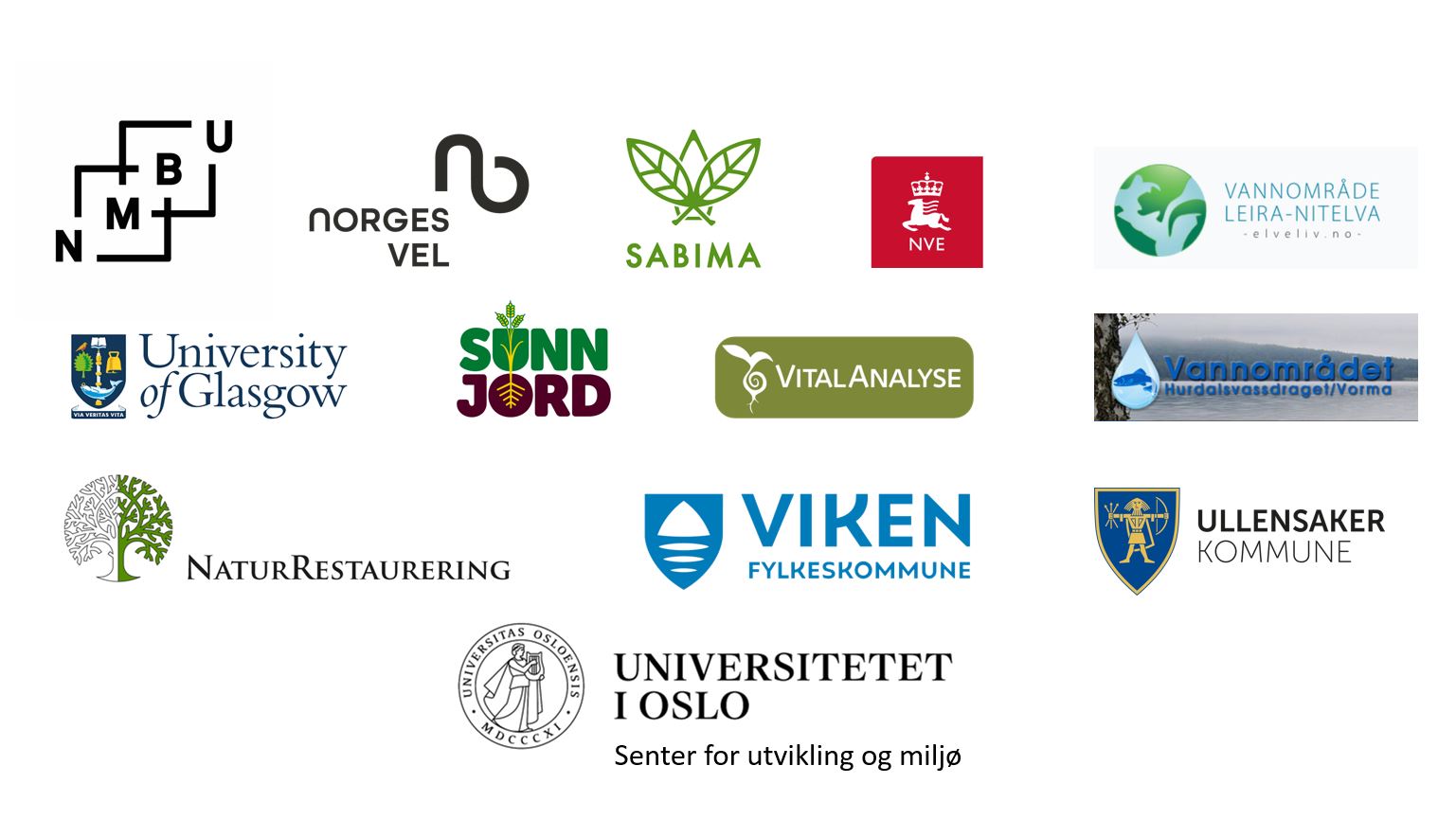About the project
Arable land comprises only three percent of Norway's territory, and a large portion of this agricultural land borders rivers and streams. Riparian zones, which are the strip of land bordering the river, are essential for biodiversity and flood protection. Additionally, natural riparian zones act as filters to prevent soil and nutrients from agriculture from entering water bodies.
However, we also lose valuable cultivable land if the riparian zone becomes too large. Therefore, there is often a conflict of interest between the demands for riparian zones and food production, with the latter often prevailing. Current agricultural practices contribute to soil and nutrient loss. Monocropping and intensive soil tillage deplete the soil of organic matter, reduce soil life, and therefore increase the risk of erosion and runoff. We will investigate whether regenerative agriculture, which aims to improve soil health and its ability to retain water and nutrients, can compensate for narrow or missing riparian zones.
The main challenge in restoring riparian zones and improving soil health is not a lack of knowledge about what needs to be done, but finding solutions that are acceptable to farmers, ecologists, and management authorities. Environmental regulations in agriculture that includes farmers' knowledge, perspectives, and cultural context have proven to be more effective and sustainable both socially and environmentally. However, we lack knowledge about farmers' perspectives on riparian zones in Norway.
Objectives
in RIPARAGRO, we will co-create knowledge through interviews and workshops with farmers, ecologists, and management authorities to both uncover social, cultural, economic, and historical barriers, as well as find common solutions for restoring riparian zones in agricultural areas. We will also calculate the area of agricultural land that borders waterways in Viken - the first overview in Norway of its kind. It will give us a knowledge base for discussing various trade-offs and synergies between riparian zone restoration and food production. Finally, we will also explore whether regenerative agriculture can facilitate restoration strategies that various stakeholders can agree upon and whether it affects riparian zone biodiversity through ecological measurements.
Through interdisciplinary research, RIPARAGRO will provide the government and management authorities with a solid knowledge base regarding riparian zones and runoff issues.
Financing
RIPARAGRO is financed by the Norwegian Research Council through ther call Collaborative Projects to meet Societal and Industry-related Challenges.
Cooperation
The partners in RIPARAGRO are:
- Farmers in Østfold, Akershus, Buskerud, Vestfold og Innlandet
- Center for Development and the Environment, UiO
- NMBU
- University of Glasgow
- Naturrestaurering
- Sunn Jord
- Norges Vel
- Sabima
- Vannområde Hurdalsvassdraget/Vorma, Nannestad kommune
- Vannområdet Leira/Nitelva
- Østfold fylkeskommune
- Norges vassdrags- og energidirektorat (NVE)
- Ullensaker kommune
- Jordhelseprosjektet i Aremark, Marker og Rakkestad kommune

Duration
The project will run between 1st of April 2024 and 30th of November 2027.
